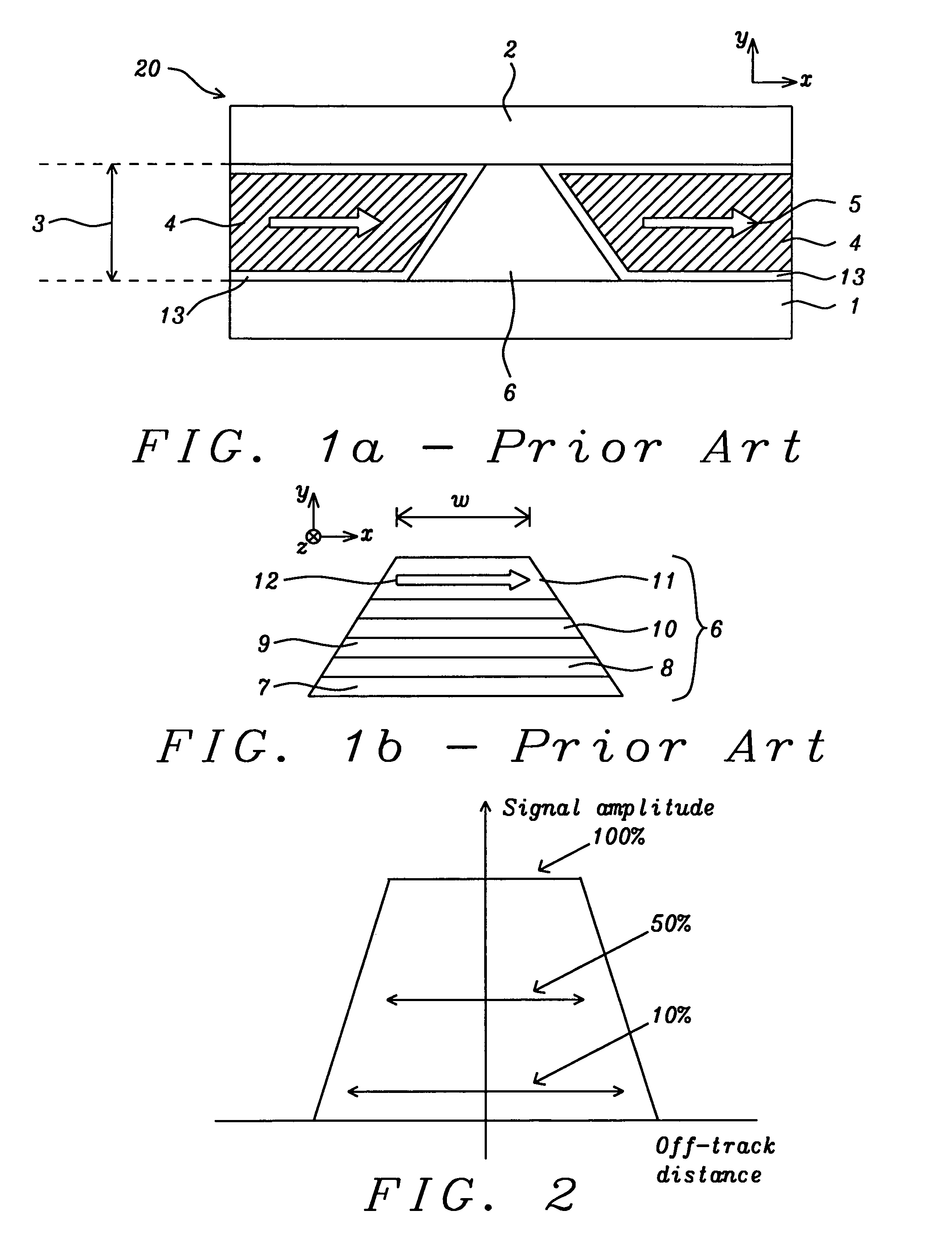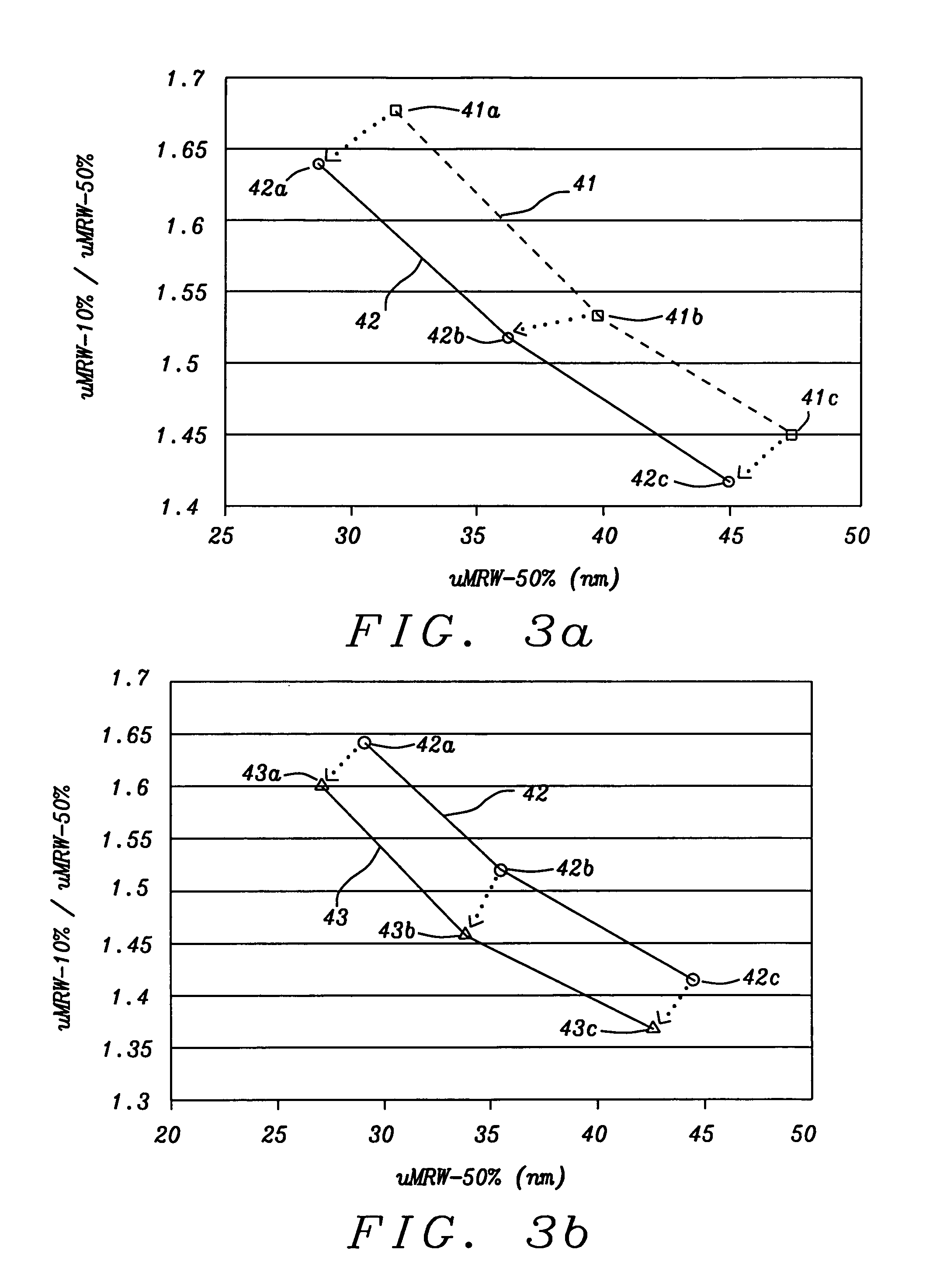Side shielded magnetoresistive(MR) read with perpendicular magnetic free layer
a free layer and magnetoresistive technology, applied in the field of read heads, can solve the problems of noisy sensor, less stable sensor, and extremely unstable free layer, and achieve the effect of greater shielding effect and wide width
- Summary
- Abstract
- Description
- Claims
- Application Information
AI Technical Summary
Benefits of technology
Problems solved by technology
Method used
Image
Examples
Embodiment Construction
[0038]The present invention is a magnetoresistive (MR) read head in which a sensor stack has a top spin valve configuration and a self-biasing free layer with PMA that can achieve narrow stack width and a narrow read gap without the need for stabilization from a permanent hard bias structure. The sensor stack design is compatible with a variety of surrounding shield structures that include full and extended side shields. Although the preferred embodiments include a TMR sensor configuration, the sensor stack may also have a CPP GMR or CCP-CPP GMR configuration. The present invention also includes a method of forming the MR read heads as described herein.
[0039]In related patent application Ser. No. 12 / 589,614, we disclosed the advantages of Co / Ni multilayer structures and the like having high PMA in CPP-TMR sensors where the magnetic anisotropy of a (Co / Ni)X laminated structure arises from the spin-orbit interactions of the 3d and 4s electrons of Co and Ni atoms. Such interaction caus...
PUM
 Login to View More
Login to View More Abstract
Description
Claims
Application Information
 Login to View More
Login to View More - R&D
- Intellectual Property
- Life Sciences
- Materials
- Tech Scout
- Unparalleled Data Quality
- Higher Quality Content
- 60% Fewer Hallucinations
Browse by: Latest US Patents, China's latest patents, Technical Efficacy Thesaurus, Application Domain, Technology Topic, Popular Technical Reports.
© 2025 PatSnap. All rights reserved.Legal|Privacy policy|Modern Slavery Act Transparency Statement|Sitemap|About US| Contact US: help@patsnap.com



